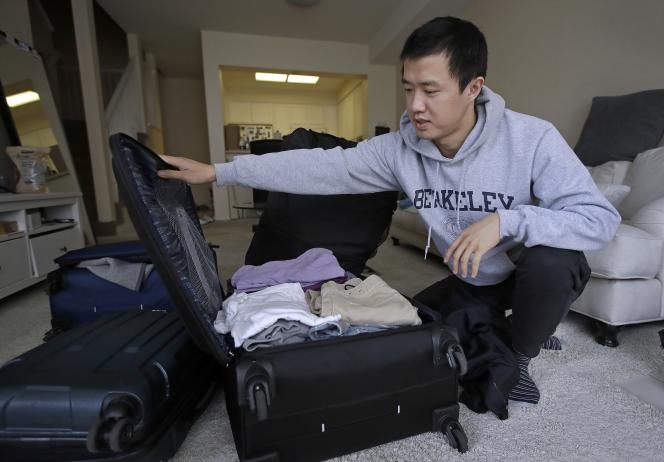In January, Haoning Zhang, 33, was among the batch of layoffs announced by Google. Two months later, after his notice, the young engineer, of Chinese origin, left the offices of the search engine in Irvine (California), where he had been employed for eight months. Since then, he has given himself two missions: to find a job and above all a visa.
On the employment front, times are tough. The market is no longer so favorable to employees. “Companies set the bar much higher”, he explains. Recruiters give applicants programming tests. The professional network LinkedIn is full of profiles of coders crossed out with the mention: “Open to work” (ready to work).
In terms of visas, the situation is complicated. Haoning Zhang is in the United States with a “technological” visa, known as H1B, valid for three years. Disadvantage: said visa is attached to employment. If they lose their job, its beneficiaries have sixty days to leave the country, regardless of their family situation.
Five months after the announcement of his dismissal, the young engineer remains hopeful. He has recruited an immigration lawyer who has already enabled him to obtain an extension of his residence permit. If he doesn’t find a job quickly, he is thinking of going back to university, which would allow him to apply for a student visa. With multiple degrees in engineering and computer science, he plans to study a new discipline: business.
Particularly acute problem for Indians
Like Haoning Zhang, employees with H1B visas are doubly victimized by post-pandemic downsizing at tech companies. The number of licensees is not known, as the companies do not take into account the immigration status of the personnel affected. But experts believe there are probably tens of thousands at frantically looking for options to stay in the United States, according to the expression of the information site Mint, established in New Delhi. Foreigners make up 30% of the workforce in Silicon Valley.
The H1B visa, reserved for holders of a master’s degree, is the main American visa program for temporary workers. Nearly 600,000 people currently benefit from it. It had been opened in 1990 at a time of shortage of specialized labor in areas such as health, education or accounting. It has become the visa for computer scientists. The Indians represent 75% of the beneficiaries, the Chinese about 9%. The CEOs of Google, Sundar Pichai, and Microsoft, and Satya Nadella, themselves arrived in the United States with an H1B.
You have 56.55% of this article left to read. The following is for subscribers only.
